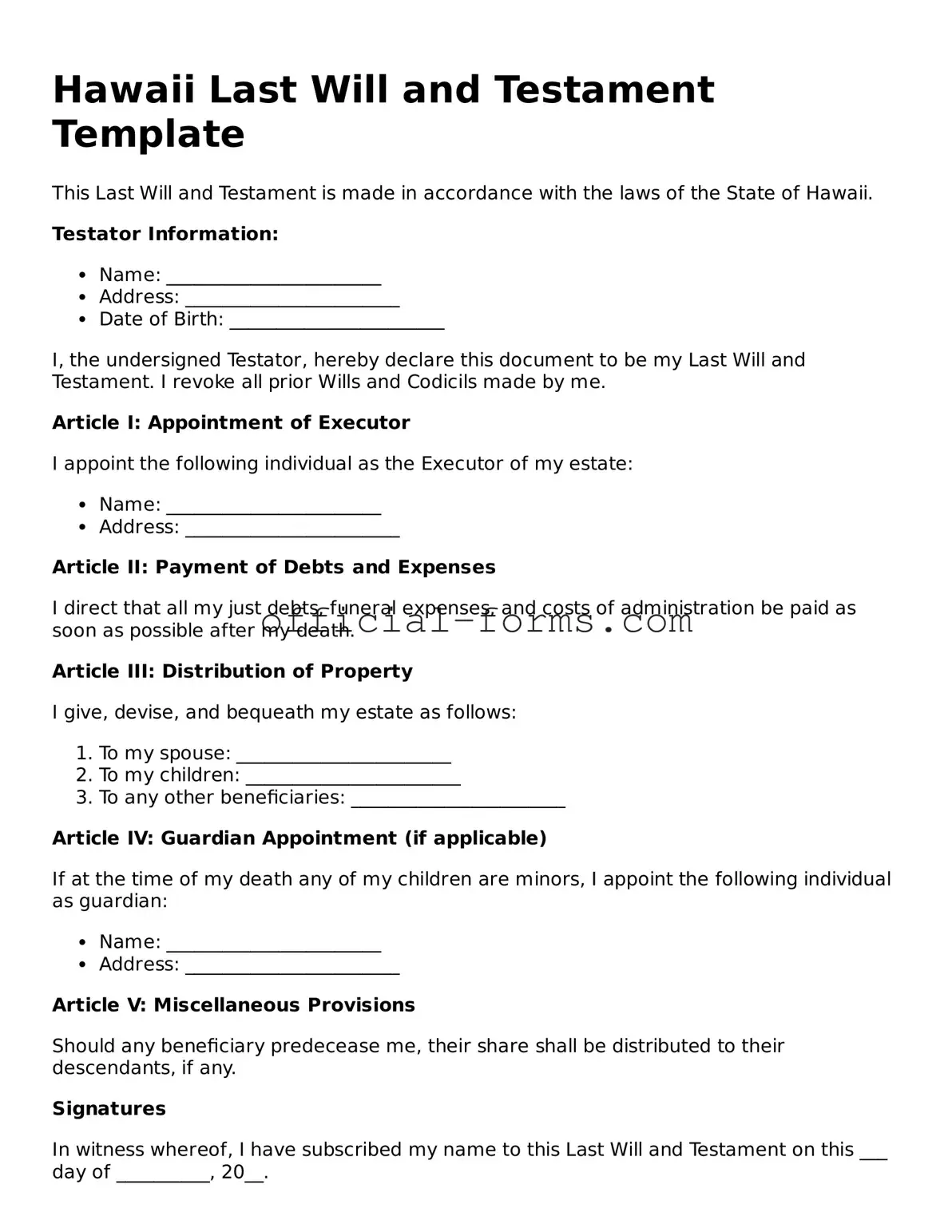Official Hawaii Last Will and Testament Document
The Hawaii Last Will and Testament form is a legal document that allows individuals to outline their wishes regarding the distribution of their assets after their death. This form serves as a crucial tool for ensuring that personal belongings, property, and finances are handled according to one’s desires. Understanding how to properly complete this document can provide peace of mind for both the individual and their loved ones.
Open My Last Will and Testament Now
